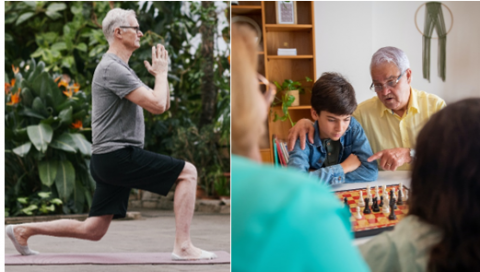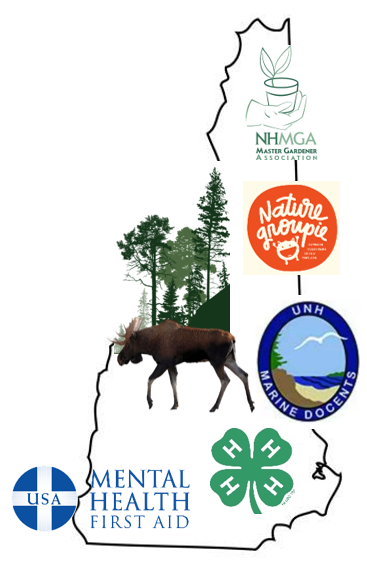Prolonged Social Isolation and Loneliness are Equivalent to Smoking 15 Cigarettes A Day
Before the pandemic, one in four people older than age 65 experienced social isolation, putting them at a greater risk of loneliness, according to the U.S. Centers for Disease Control. These feelings of loneliness were exacerbated by the COVID-19 pandemic. The exact number of seniors who feel lonely is difficult to pinpoint, but a University of Michigan poll found 56% of adults ages 50 to 80 reported feelings of isolation in June 2020. Though the survey included respondents below the senior age range, it demonstrates a stark contrast to reported feelings of loneliness in 2018, when 27% of respondents reported feelings of isolation.
Many times, social isolation and loneliness are used interchangeably. The two are connected, but different.
- Social isolation is the lack of social contacts and having few people to interact with regularly. An individual can live alone and not feel lonely or socially isolated, just as someone can feel lonely while being with other people.
- Loneliness is the feeling of being alone, regardless of the amount of social contact.
According to the National Institute on Aging the health risks of prolonged isolation are equivalent to smoking 15 cigarettes a day. Social isolation and loneliness have even been estimated to shorten a person’s life span by as many as 15 years. People who are socially isolated or lonely (SI/L) are more likely to be admitted to nursing homes and the emergency room. According to the Health Resources and Services Administration, people who are SI/L may get too little exercise and often don’t sleep well, which can increase the risk of stroke (by 32%), heart disease (by 29%), mental health disorders (by 26%) and premature mortality (by 26%), as well as other serious conditions.
The University of California San Francisco found that being alone most of the time may contribute to a decline in the ability to perform everyday tasks. Fifty-nine percent were more likely to find daily tasks such as climbing stairs or walking more difficult.
Social isolation and loneliness may also be bad for brain health and have been linked to poorer cognitive function and higher risk for dementia (by 50%), including and especially Alzheimer’s disease. Unlike mental health disorders such as depression, social isolation and loneliness often aren’t diagnosed. However, they still can promote negative cognitive and physical health effects.
People who are lonely experience emotional pain. Losing a sense of connection and community can change the way an individual sees the world. Someone experiencing chronic loneliness can feel vulnerable and mistrustful of others. Emotional pain can activate the same stress responses in the body as physical pain. When this occurs over a long period of time, it can lead to chronic inflammation and reduced immunity. This raises risk of chronic diseases.

Effects of COVD-19 Pandemic on Social Isolation and Loneliness
A recent 2021 AARP survey on COVID-19 and emotional wellbeing reveals how the pandemic has taken its toll on older adults’ mental health. Results showed the emotional impact of the pandemic has led some older adults to increase both positive and negative coping habits. For example, one quarter of older adults reported eating more unhealthy foods now vs. pre-pandemic. A positive result shows that 27% have increased practicing mindfulness such as meditation or prayer.
- 77% of those aged 50 and older said the pandemic had increased their level of concern about the future and worry in general.
- Similarly, seven in 10 said they had an increased level of depression and anxiety.
- 50% reported that the pandemic had increased their level of anger in general.
These findings are supported by recent results from the National Poll on Healthy Aging survey which found many older adults ages 50 to 80 reported experiencing worse depression or sadness, anxiety and worry, since the start of the pandemic. This makes sense, given what we know about prolonged social isolation and loneliness.
Sources of Joy for Older Adults
Being involved in the community, through volunteerism or a faith-based religion bring senior’s joy. According to the AARP study, other sources of joy for older adults include activities such as:
- Being outdoors (87%)
- Physical activity (72%)
- Hobbies, skills or projects (72%)
- Connecting with others in person (83%)
- Connecting by phone or virtually (79%)

Are you or a loved one at risk for social isolation?
To find out if you or a loved one is at risk, take this quick free assessment by the AARP Foundation
Getting Involved
UNH Extension offers many volunteer opportunities across the state to connect in your community or from home. 4-H is a great way for older adults to mentor younger generations and the gain mental health benefits of intergenerational learning. There are physical benefits to joining the Master Gardening program—exercising through planting and the joy of growing food and plants. There are over 4,500 volunteers for UNH Extension taking part in 15 programs. Check them out! There is a spot waiting just for you.
Source: Michele M. Kroll
Check Out Our New Health & Well-Being Page
Our specialists help create healthy people and healthy places in New Hampshire.
Featured LINK
Mental Health Resources for New Hampshire - a printable county-specific guide to help New Hampshire residents find local, state, and national mental health resources.


